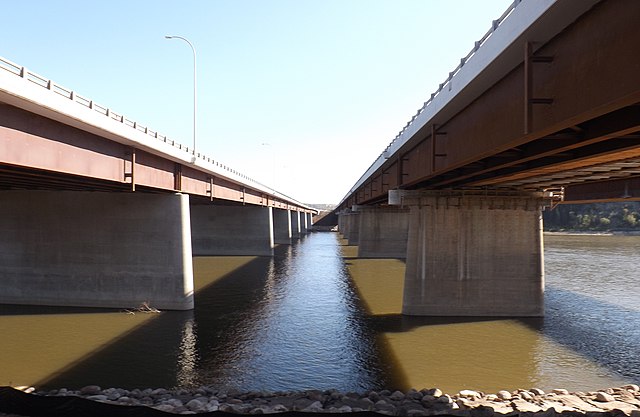https://www.urbanyvr.com/vantage-miniature-vancouver That's just how some people would like to keep Vancouver, as a little toy city.
A multi-generational miniaturizing or thwarting process started in Vancouver several decades ago. Essentially a white power-structure wanted to create so many overlapping municipal restrictions in order to dramatically slow the growth of the city. By refusing to build up proper big city infrastructure, Vancouver continually demonstrates its reluctance to act like a big city. Vancouver is one of the smallest major cities on earth. However, the BC Lower_Mainland could contain, Greater_Montreal , the Calgary_Metropolitan_Region , the Edmonton_Metropolitan_Region and Winnipeg. So a clever way was devised to keep the region from becoming another Toronto or Montreal or even like Seattle or any other major urban region that people want to move to.
The result is having short & congested trains when many cities allow 8 to 10 car trains. Having narrow bridges & roads to increase congestion & frustration. Buildings are kept short, despite the high cost of land.
Vancouver & BC is all about keeping people out, but since a force force field can't be established around BC, something else was done. Just keep limiting or restricting the size of the overall infrastructure & hope that no one notices. That's what the predominantly white power-structure still wants. Of course if they openly revealed their agenda, there just might be a multicultural movement that would demand that Vancouver start to behave more like all the big cities in Canada. That BC allow for significant growth. Switzerland can fit into BC about 23 times. Yet, BC has yet to reach the population of one Switzerland.
Unfortunately at this point, its become quite evident that unlike most major cities, Vancouver still refuses to build up proper big city infrastructure.
At least its interesting to see what other major cities are able to do, simply because they aren't under the planning & building restrictions of Vancouver.
https://en.wikipedia.org/wiki/Montreal#Transportation Mon. & To. flourish in part, because they aren't under any type of small Vancouver or BC building limitations.
https://en.wikipedia.org/wiki/Toronto#Transportation It would be like a Sci-Fi horror story if Vancouver was able to force Toronto & Montreal to only have 4 lane roads & short trains with only 2 - 4 rail-coaches. Fortunately, Vancouver & BC in general, were unable to change the mentality of Toronto & Montreal. Even much closer Seattle & Calgary are able to have much wider roads than what Vancouver allows.
https://en.wikipedia.org/wiki/Calgary#Infrastructure
"Construction is underway on the final two legs of the freeway in west and southwest Calgary; both legs have been divided into north and south projects. The time-sensitive northern segment of the southwest leg will be completed first, following a land transfer agreement[42] with the Tsuu T'ina First Nation that was reached in 2013. It is being built as a 6-8 lane freeway to be completed by October 1, 2021,[43] with the ability to upgrade the corridor to a 16-lane freeway with express and collector lanes." https://en.wikipedia.org/wiki/Stoney_Trail#Future (In Vancouver, its like the roads can't be any wider than what Lethbridge has.)
"In late 2020 the Government of Alberta announced they will replace the existing eastbound bridge over the Bow River on Southeast Stoney Trail, widen the westbound bridge and build a new, stand-alone pedestrian bridge. The project will boost the number of lanes to four in each direction — currently the eastbound crossing has two lanes, while the westbound has three." https://en.wikipedia.org/wiki/Stoney_Trail#Future (Calgary actually will build a pedestrian bridge so that road lanes don't have to be reduced.The Vancouver approach is to avoid building pedestrian & bike bridges, opting instead to reduce lanes of traffic. This bottleneck planning approach ensures the best way to achieve even more congestion. So far, no one from Vancouver or BC has been able to get Albertans to go back to the horse & biggie days. Or, to simply ban most vehicles & force most people to go on bikes, skateboards or roller-blades, in addition to public transit. A good transportation system means having longer trains, wider roads & more bike & foot bridges to not reduce traffic lanes.)
https://en.wikipedia.org/wiki/Calgary_Metropolitan_Region#/media/File:Calgary_Skyline_2015.png 4 lanes each way with 2 C Train tracks in the middle.
The closest attempt in Greater Vancouver is in Burnaby. Only because the train is elevated, there might be a potential to have 4 lanes each way. https://en.wikipedia.org/wiki/Brentwood_Town_Centre_station#/media/File:Brentwood_Skytrain_long-exposure.jpg However, like in Vancouver, its tough enough just to have 3 lanes each way. https://en.wikipedia.org/wiki/British_Columbia_Highway_7#/media/File:Lougheed_Hwy_near_Brentwood_Stn.JPG
British_Columbia_Highway_7 doesn't have to be upgraded to a freeway, but most of it should have been 8 lanes wide by now.
https://en.wikipedia.org/wiki/Edmonton#Infrastructure
"The entire freeway road was built with expansion in mind; almost all bridges were built wide enough for expansion to the ultimate stage which includes as many as six main travel lanes in one direction, depending on location." https://en.wikipedia.org/wiki/Anthony_Henday_Drive#Future (A potential of 6 lanes each way in Edmonton. In Vancouver, its tough enough to have streets that are 6 lanes wide.)
https://en.wikipedia.org/wiki/Edmonton_Transit_Service#LRT
https://en.wikipedia.org/wiki/Red_Deer,_Alberta Two parallel bridges that allow for 3 lanes each way. Not a big deal for RD, but for Vancouver the power-structure doesn't even like more than 2 lanes each way.
https://upload.wikimedia.org/wikipedia/commons/thumb/8/8b/Fort_McMurray_Athabasca_River_Bridges.jpg/640px-Fort_McMurray_Athabasca_River_Bridges.jpg Many cities will have parallel bridges less than a block apart. This is a way to add capacity to the overall crossing. In Vancouver this is frowned upon. In stead of increasing capacity, the crossings are kept narrow & sometimes even a lane or 2 is removed. This really helps to increase congestion, but that's whats expected with bottleneck planning. https://upload.wikimedia.org/wikipedia/commons/thumb/8/86/Fort_McMurray_Athabasca_River_Bridges_2.png/640px-Fort_McMurray_Athabasca_River_Bridges_2.png Vancouver has taken measures to prevent it from ever having any bridge or overall crossing from containing 10 lanes as in Ft. McM.https://upload.wikimedia.org/wikipedia/commons/thumb/1/11/Surrey_aerial_view.JPG/640px-Surrey_aerial_view.JPG However, Vancouver was unable to stop Surrey from having a 10 lane crossing.


